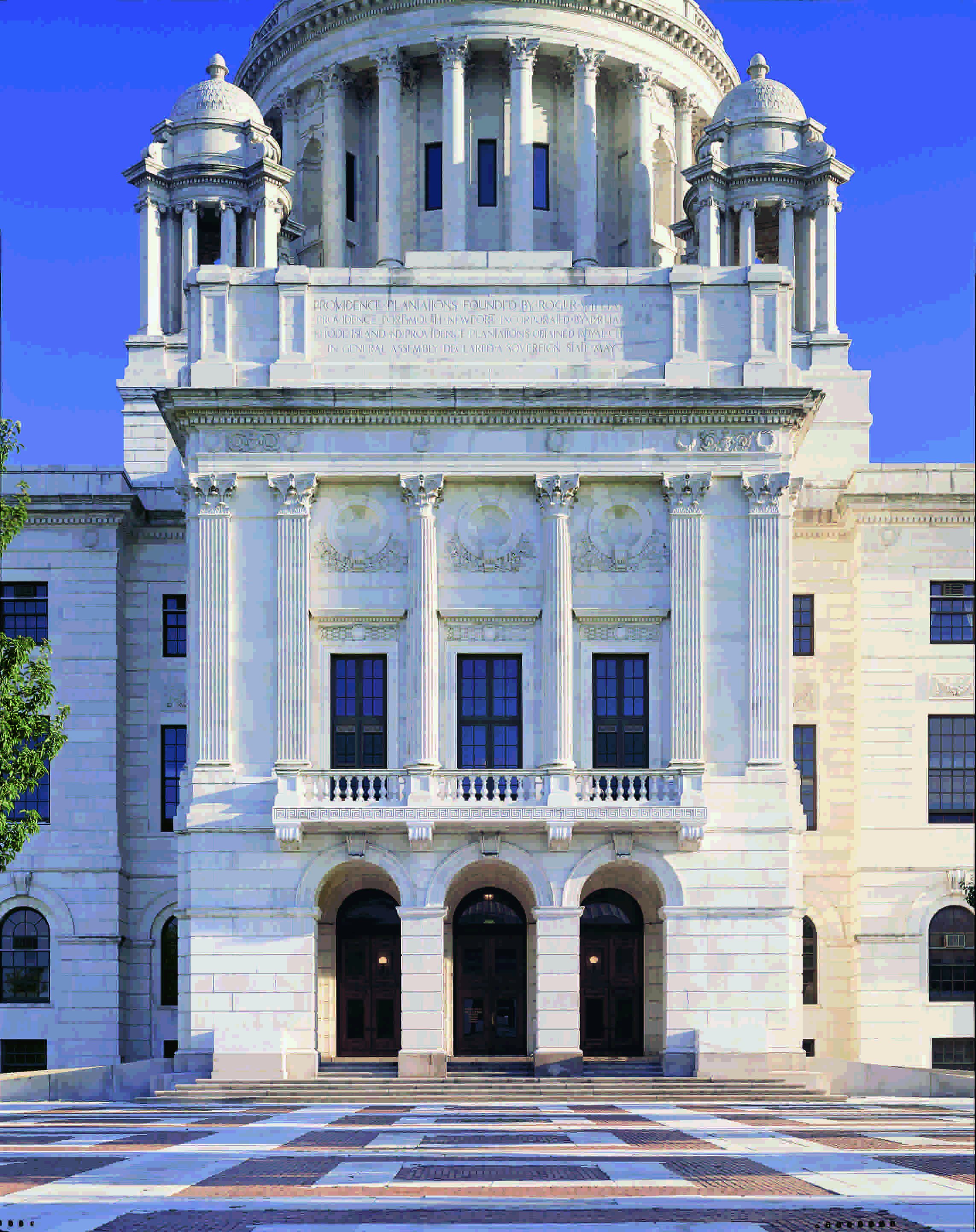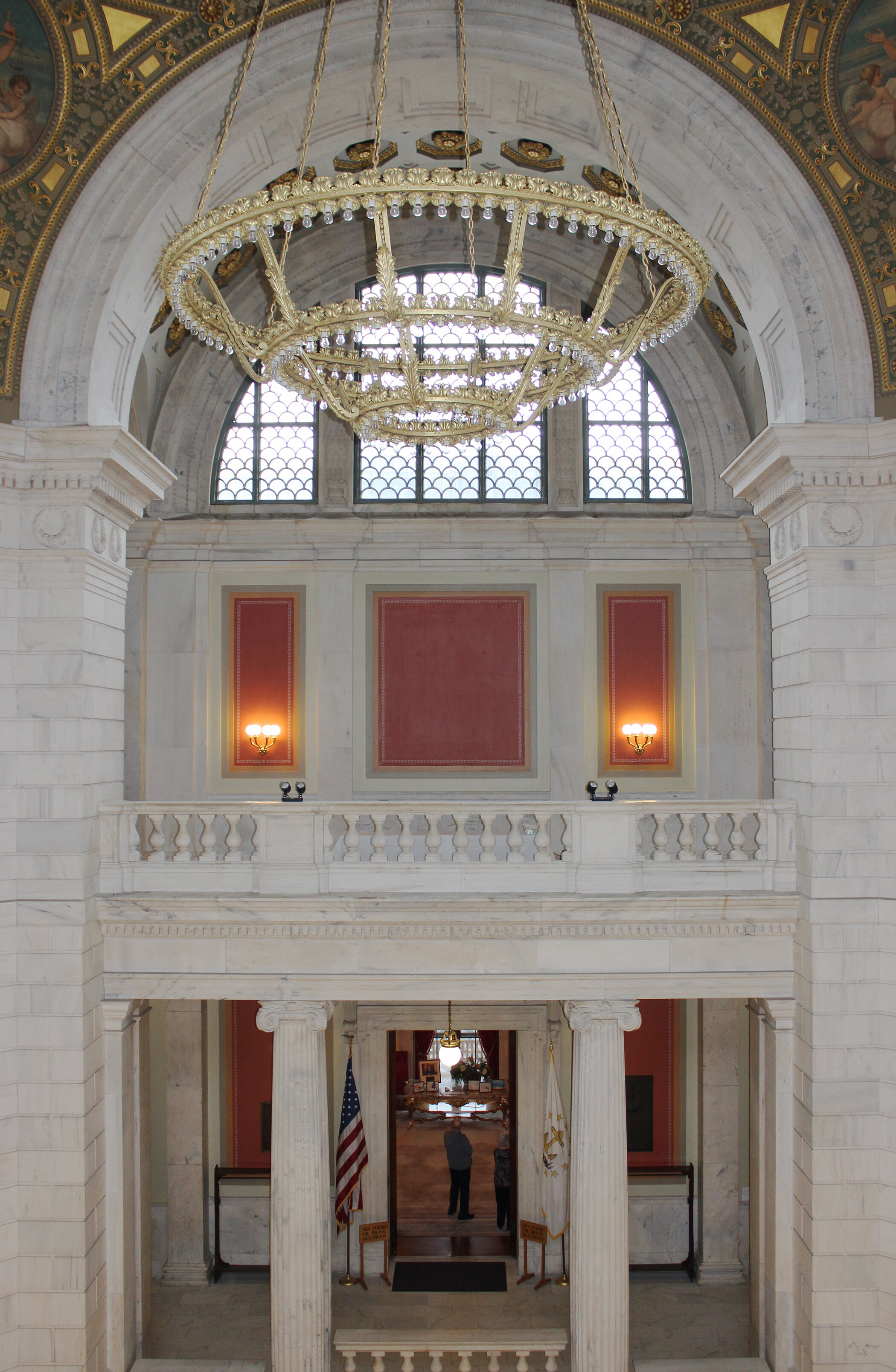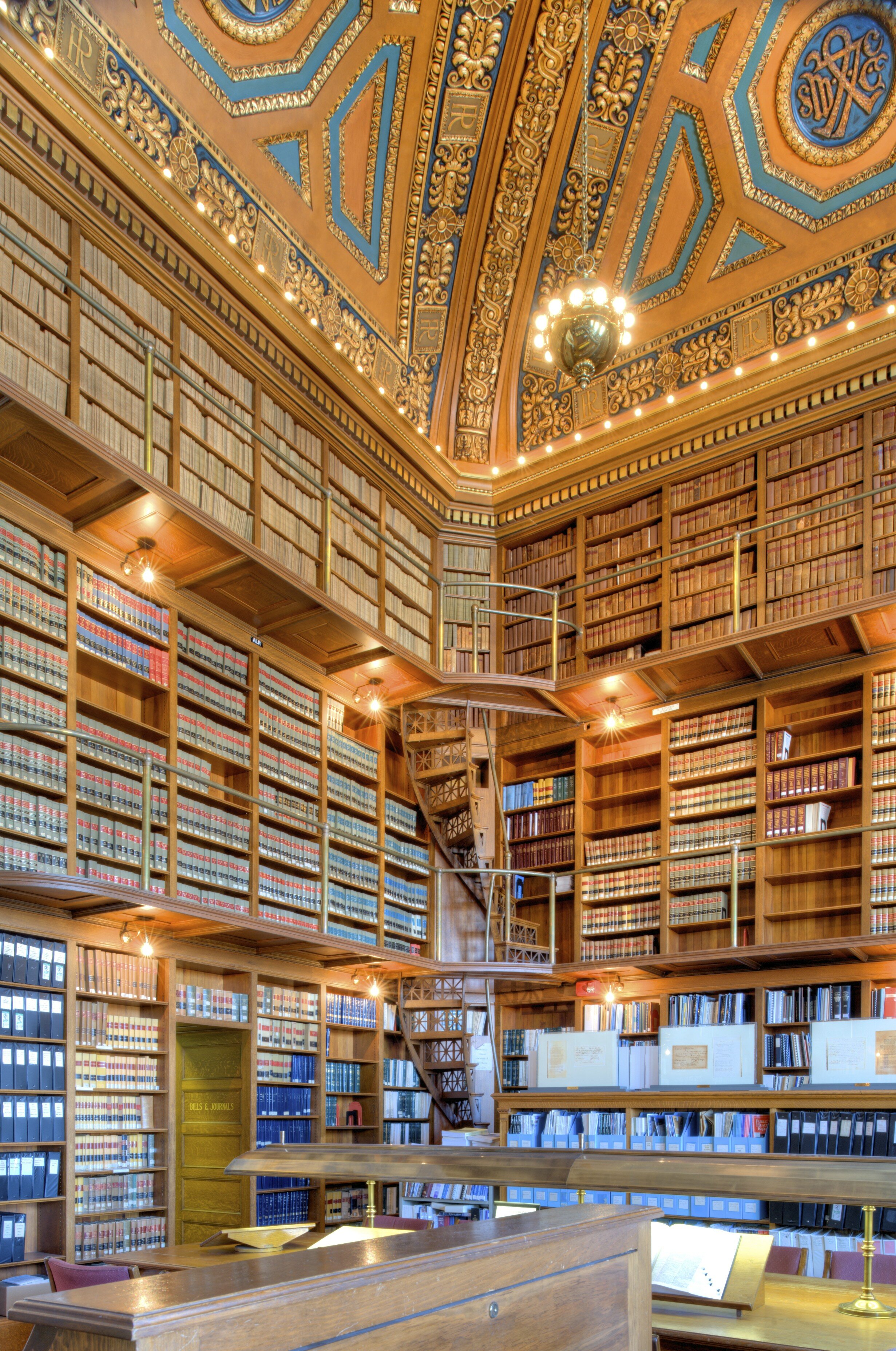
About the State House
The Rhode Island State House is the seat of state government, and a magnificent example of American Renaissance architecture. The Governor, Lieutenant Governor, Secretary of State and General Treasurer have their principal offices in the building, and it also holds the legislative chambers for Rhode Island’s General Assembly. Other building highlights include the State Reception Room, the State Library, and the Charter Museum, which houses Rhode Island’s 1663 Royal Charter alongside other historic documents and objects. The State House and Charter Museum are open to the public during regular business hours.
The State House was designed by the renowned architecture firm of McKim, Mead & White, winners of a national competition to design a new State House for Rhode Island. Based in New York, the firm was well-known for having designed important buildings across the country including the Agricultural Pavilion at the 1893 World’s Columbian Exposition in Chicago and the Boston Public Library. In Rhode Island, they designed the Narragansett Pier and Newport Casinos, as well as the homes of many prominent residents. Significantly, the Rhode Island State House is the only state capitol building designed by McKim, Mead & White. Its construction took nine years, from the groundbreaking on September 16, 1895, until its completion in 1904.
Rhode Island was the richest state per capita at the turn of the century and the State House reflects this wealth. It is made of marble, quarried in Georgia, was one of the first major public buildings to have electricity, and boasts the fourth largest self-supported marble dome in the world, following St. Peter’s Basilica, the Minnesota State Capitol, and the Taj Mahal.
The State House is listed in the National Register of Historic Places in 1970, and much of the interior decoration is original, or closely resembles the original design. This includes paint colors, lighting fixtures, and some of the furniture. The State House Restoration Society has worked closely with state agencies on several restoration and conservation projects since its inception in 1995.
Tours of the State House are managed by the Secretary of State’s office. For more information visit the tours page of their website. Self-guided audio tours and self-guided tour brochures are also available at the building entrance and in the State Library. If you can’t get to the State House, an online 3D tour is also available.

inside the people’s house
Furniture in the State Reception Room
State Reception Room
Decorative ceiling in the State Reception Room
State House Rotunda
State House Dome
Senate Chamber
State Library
Stairs in the State Library
View from the East Gallery of the House of Representatives










